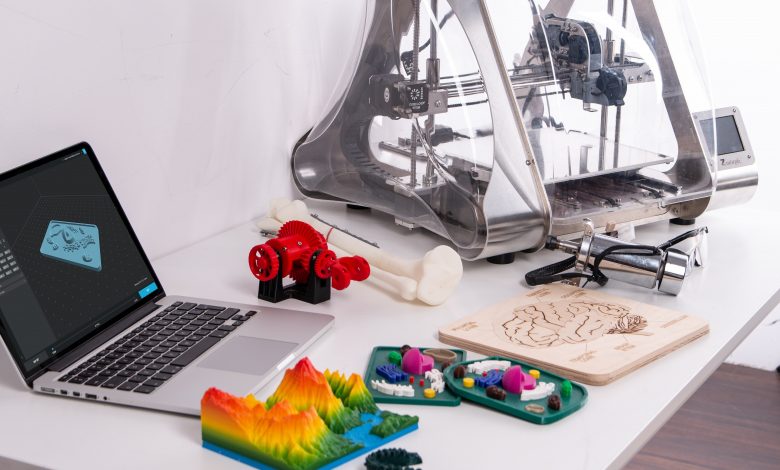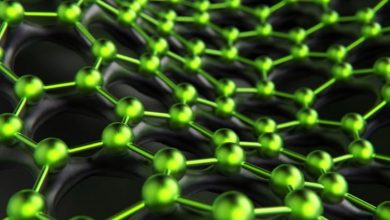
To start today we must know that a 3D printer has the ability to make replicas of 3D designs, it is a printer that can create volumetric pieces or models from a design made by a computer. This project arises with the idea of converting 2D files into real 3D prototypes, it must be said that it has been used in the prefabrication of parts, in sectors such as architecture and industrial design. However, it can be noted that nowadays the use of the manufacture of all kinds of objects is spreading, such as: models for casting, very complicated pieces, medical prostheses and food. This is because the 3D printer allows each part of the factory to be adapted to the characteristics of the patient or client as they fulfill the requirements that this design requires, thus being satisfied.
It should be noted that there are different types of commercial models such as: laser sintering this deposits fine layers of powder of different metals (steel, aluminum and titanium). Also, the stereo-lithographic in this resin the photosensitive is cured with aces of ultraviolet light, producing its solidification and finally there is the compaction this is where a mass of powder that is compacted with strata everything depends on the model used for the Dust compaction needs which can be classified into: Ink 3D Printer or Laser 3D Printer.
The 3D Ink Printer can use a binder ink to compact the powder, the use of an ink allows the printing of different colors as required or needed. On the other hand we find the laser printer, this refers to a laser that transfers energy causing it to become poly chrome, then it is immersed in a liquid that makes the detailed shapes solidify. For this reason, once you print all the layers, you only have to remove the pieces. With the help of your vacuum cleaner, remove the excess dust which can be used in future installations.
To be able to use a 3D printer at home, it is necessary to know its operation well, and it is necessary to install software that meets the requirements we need, it should be noted that there are some software that could be very helpful, among them, I will name one since to be able to carry out the Design of parts to be printed in 3D requires CAD (computer-aided design) software.
However, like this CAD software and many more of these programs, which are relatively very simple to use, because the interfaces are very pleasant and will facilitate the user to work more comfortably, in addition to having special tools to determine that our design meets with the expected features with this software or not.
As for whether we can develop robotics with the 3D printer, we can cite an example from the Harvard team which has successfully developed a 3D jumping robot with plastic of different hardness. The robot, inspired by the locomotion mechanisms of the larvae of certain invertebrates, burns British and oxygen to propel itself through jumps. Research regarding the development of robotics using a 3D printer, in terms of the possibilities of 3D printing to solve problems that until now held back the development of robots with plastic composition.
Thanks to the new printers capable of combining different materials, robotics experts take a step further in terms of the evolution of automata and a great advance in technology, robots arrive soft-bodied. This is how I identify it in an article in Science which in its study I research on soft and microfluidic robotics at Harvard is inspired by certain invertebrates and their pneumatic way of their movements to develop a machine capable of moving by means of jumps which is an improvement considerable over the original rigid design.
New trends and techniques will be able to develop access to new robots even from home
The device, powered by butane gas, is capable of surviving more than 100 jumps, compared to the scarce five that its rigid predecessor supported. In addition, it is cheaper, lighter, silent and, therefore, more functional. The robot consists of a hard plastic core that protects the key components – such as the battery, the compressor or the processor – surrounded by another soft body that, in turn, is formed by a semicircular air spring, which resembles a float. Finally, the robot incorporates three pieces of silicone that act as legs.
The achievement has consisted in combining both parts, the rigid and the soft, taking advantage of the characteristics of each material. The machine works as follows: first, the compressor sends air to the supports that surround the spring, the legs, and they inflate and the robot leans in the direction to which it is going to jump. Afterwards, the compressor fills the spring with butane and oxygen, a spark is generated, and the combustion propels it almost a meter and a half away. It is a simple and efficient way to get around, but also to test the resistance and effectiveness of these new materials.

Robots have traditionally been built and thought of as metal skeletons, rigid, heavy and therefore expensive and difficult to build, so scientists and researchers have been looking for an alternative for some time. Inspired by nature, the solution has been to go for the soft, but until now it was complex and difficult to combine different materials of different strengths, soft and hard components.
3D printing has been driving the development of this field of robotics for years: it allows the construction of parts that, until now, required specific molds, and that had to be assembled separately. The latest printers can combine different plastics in a much more organic way.
The next step in the evolution of robots is open. This construction technique will democratize access to products and even make it possible to manufacture robots at home. It will also be possible to diversify the designs: better and cheaper machines will be created, capable of withstanding more and of going further, of floating or entering through small crevices.




